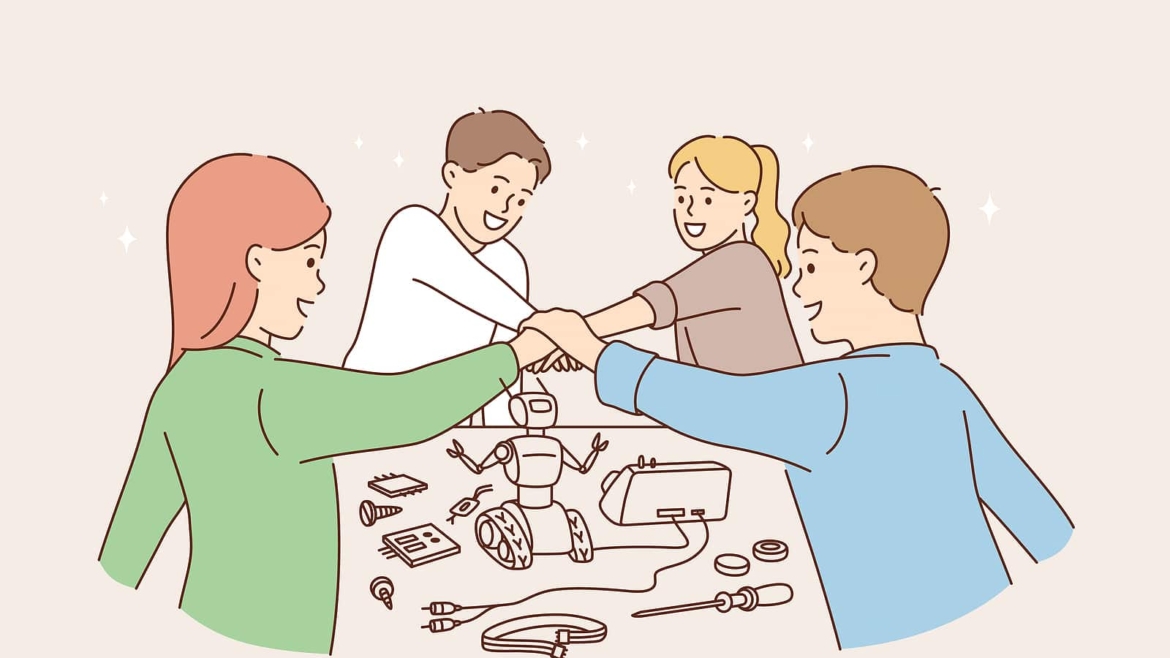Making new friends can be challenging for any child. There’s always a bit of anxiety in approaching people, introducing yourself and building a new relationship.
Now imagine trying to make friends when you have a tough time reading social cues: figures of speech, body language, hand gestures and facial expressions. This is the challenge for children with autism.
It’s also a source of anxiety for parents. But in autism education programs, we focus on teaching social skills that don’t come naturally. And parents can help their kids practice at home.
Here are a few ways, with advice from behavior experts Jocelyn Eskenazi and Holly Hennessey. The tips here apply mostly to high-functioning children with autism; we often take different approaches for nonverbal children, for example.
“You won’t believe how helpful writing out a script for a conversation can be, whether it’s in person, by phone or by text message.”
1. Help them understand what a friend is
Sounds basic, right? But starting with the basics is critical for developing social skills. We have seen children who think of bullies as friends, for example, so this distinction matters.
Use simple language. For example, ask, “Do you like to spend time with somebody who calls you names?” And “Do you like to spend time with someone who is nice to you?”
Be literal, because your child will be, too. Avoid saying abstract things like, “Friends are people who care for the real you and accept you for who you are.” Instead, say, “Friends treat you nicely, ask you what you like or want to do, and say things to make you feel better when you are having a tough time.”
2. Use scripts and visuals
Speaking of basics, children with autism often benefit from a script or visuals that model a conversation.
Take the “introduction,” for example. We use a pyramid visual that illustrates how a conversation starts small and branches out. At the top are simple things: asking a person’s name and grade. The next level goes a little deeper: favorite hobbies or school subjects, and so on. That’s the kind of learning tool that you can use at home, too.
The same goes for scripts. You won’t believe how helpful writing out a script for a conversation can be, whether it’s in person, by phone or by text message. A script — complete with “thank-you” and age-appropriate phrases such as “cool”— goes a long way toward practice.
3. Offer real-world practice
Parents often fear the public setting. Perhaps you’ve experienced one too many meltdowns. I understand that, but getting your child out into social settings is crucial for practicing social skills.
You can minimize behavior risks by involving your child in planning. If you’re planning a trip to the zoo with the family, have your child help pick snacks to take and develop a schedule, for example.
The idea applies to planning a hang-out session with a friend, too. Have your child think about activities he or she wants to do and this new friend may want to do. Then plan a schedule together that incorporates both. Doing this teaches the social compromise involved in all friendships.
4. Build off your child’s interests
Have you ever made a friend based on a common interest: music, sports or a hobby? That works for children with autism, as well.
If your child really loves chess, find a chess club. If your child loves art, sign up for an art class. These offer built-in interests and conversation points — and a fun setting for social interaction.
Just be sure the setting includes kids of the same age. When practicing social skills, it’s important for your child to be surrounded by age-appropriate behavior.
5. Think about long-term success
None of this happens overnight, so be patient.
Sometimes we build a five-year plan for children, for example. If a child is 8 years old now, at what level should their social skills be at age 13? And then what individual skills — the introduction, conversational skills, behavioral skills — can we work on along the way?
As much as possible, that involves you helping your child practice at home. Most autism education programs offer sessions for parents and others to facilitate that process. When you have the opportunity, participate.
Originally posted on Cleveland Clinic.




